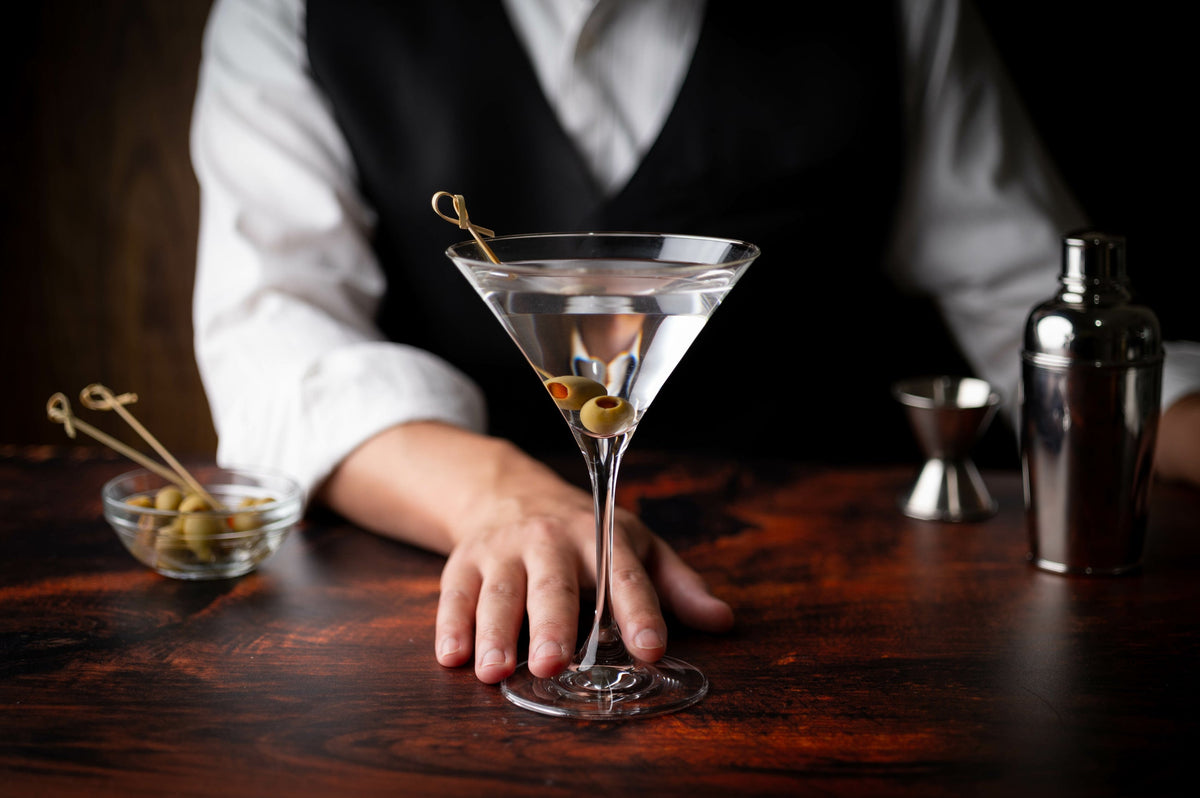
Stir Crazy: Why The World is Wild About The Martini
|
|
Time to read 3 min
|
|
Time to read 3 min
In the pantheon of cocktails, the Martini is king. Sipped and celebrated from the Gilded Age to the Mad Men era and beyond, no other libation has captured the imagination of the drinking public quite like it. But what is the secret to the Martini’s allure?
Is it the way it looks—crystal clear in the glass like a cool lake on a warm day? The taste—bracing yet sippable? Or it’s the iconic V-shaped glass in which it’s traditionally served?
Maybe the Martini is so renowned because it’s so elemental: Two ingredients but a wealth of possibilities. Gin or Vodka? Vermouth, but how much? Shaken or stirred? Two ingredients but the devil’s in the details.
Drinkers, and the bartenders they love, have been debating the “right” way to make a Martini since…well whenever it was invented. They’ve been debating that, too.
Famed cocktail historian Dave Wondrich, author of Imbibe!, reckons the Martini was an off-shoot of the Martinez cocktail, itself an off-shoot of the Manhattan, the first American drink to combine Spirits and Vermouth. But, like trying to piece together a big night out the morning after, the details are a bit fuzzy.
Let’s just say, the Martini is a drink about which people have a lot of strong opinions. But beyond those basic ingredients, there is no “best” or “right” Martini, there’s just personal taste. The best way to work out your preferred Martini, is to start with a good basic recipe.
We asked Frank Caiafa, former bar manager at the famed Waldorf Astoria Hotel, current bar manager at The Stayton Room in New York’s Lexington Hotel, and author of The Waldorf Astoria Bar Book, to be our guide. “Personally, I very rarely alter my Martini recipe because it’s what I think a Martini should be and what I expect from it,” he says.
3 oz. London Dry Gin
.50 oz. Dry Vermouth
Add all ingredients to mixing glass. Add large, cracked ice and stir for 30 seconds. Strain into chilled cocktail glass. Lemon twist and olive, for garnish.
Now that we’ve set out the terms, let’s tackle the debate.
The Martini was originally made as a Gin cocktail. But over the years, the drinking public’s taste for Gin has waxed and waned, leaving room for Vodka to enter the space.
My feeling is, drink what you love, but as a Gin enthusiast, you should give the juniper Spirit its due—a Martini is made with Gin unless otherwise specified.
Caiafa agrees, “It’s Gin for me,” he says. “I can’t imagine why people would crave an ice cold glass of alcohol with no defining flavor, and probably requested without Vermouth. It is my goal to try to get those folks to at least try a Gin version at every chance I get. I have a great conversion rate!”
Here’s where you get to experiment with proportions. “I know plenty of tipplers who adapt their ratios for mood, weather, expected number, etc,” says Caiafa.
A dry Martini uses less, not drier Vermouth (there’s no such thing as drier Vermouth) and the ratio of Gin to Vermouth can slide from 3-to-1 to a bone-dry 9-to-1.
A wet Martini calls for upping the amount of Vermouth. The 50/50 or perfect Martini is made with equal measures of Gin and Vermouth, which results in a lighter, more flavorful and lower AVB cocktail that lends itself to session sipping. However, Caiafa notes, “When making a wet Martini, with more than 1/4 Vermouth, or a 50/50, adding a dash or two of orange bitters is essential.”
When you mix a drink, no matter the technique, the goal is to chill, dilute, and blend the ingredients. Using a cocktail shaker does all three fast—too fast for a Martini.
You want it cold but bashing it around in a mixing tin also makes the ice melt quicker, the result is weak and watered-down, with shards of ice even after straining and cloudy in the glass. Nope, nope, and nope.
Sorry, James Bond, but stirred is the way to go. Consider making a Martini as a meditation. Contemplate your life while you stir, or at least, smile winningly at your guests—you’ll look dead cool doing it.
In the end, says Caiafa, “The best version is the one that you are enjoying when you want a Martini.”
Bone dry with three olives? Vodka and dirty? How do you order your Martini? Tell us in comments.
